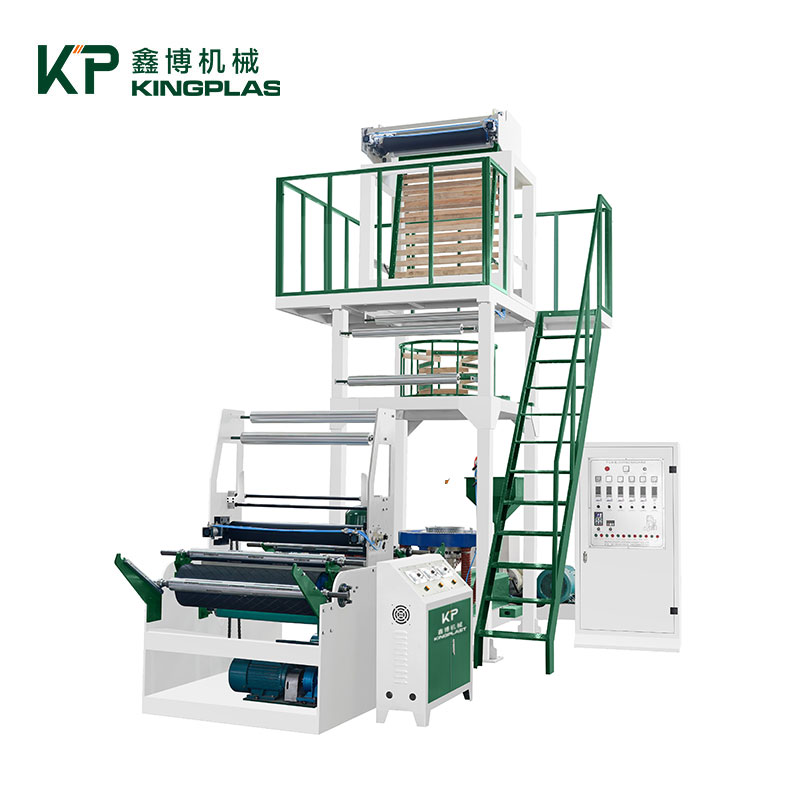What Is a Film Blowing Machine and How Does It Revolutionize the Packaging Industry?
2025-01-07
In the world of manufacturing and packaging, efficiency and precision are key. One machine that has played a crucial role in meeting these demands is the film blowing machine. But what exactly is a film blowing machine, and why has it become an indispensable part of the modern packaging industry? In this blog, we’ll dive into the workings, benefits, and applications of film blowing machines, shedding light on how they contribute to the creation of the plastic films that we see around us every day.
What is a Film Blowing Machine?
A film blowing machine is a piece of industrial equipment used to produce plastic films, which are primarily used in packaging applications. This machine melts plastic resin, usually in the form of pellets or granules, and extrudes it into a thin, flexible film. The key feature of a film blowing machine is its ability to blow the extruded plastic into a bubble, which is then stretched to the desired thickness before being wound into rolls.
This process is called blown film extrusion and is the most common method for producing flexible plastic films. These films are widely used in the packaging of food, consumer goods, agricultural products, and industrial items.
How Does a Film Blowing Machine Work?
The operation of a film blowing machine involves several key steps that work together to create high-quality plastic films:
1. Melting the Resin:
The process begins with plastic resin (usually low-density polyethylene, high-density polyethylene, or polypropylene) being loaded into the machine’s hopper. The resin is then fed into a barrel where it is heated to its melting point by a series of heaters. The melted plastic is in the form of a thick, viscous substance ready to be extruded.
2. Extruding the Plastic:
Once the resin is fully melted, it is forced through a circular die (a metal ring) that shapes the molten plastic into a thin tube. This tube is called a parison and is still hot and soft at this point.
3. Blowing the Film Bubble:
The parison is immediately inflated with air, forming a bubble. This is where the “blowing” part of the process comes in. As the bubble is inflated, the film is stretched both in the vertical and horizontal directions, which makes it thinner and longer. The size and thickness of the film can be adjusted by controlling the air pressure and the speed at which the film is drawn upward.
4. Cooling the Film:
Once the film reaches the desired thickness, it is cooled by air as it rises. The cooling process helps to solidify the film, allowing it to maintain its shape and strength.
5. Winding the Film:
After cooling, the film is collected and wound onto rolls. These rolls of plastic film can be used as-is for packaging or further processed for additional treatments like printing, laminating, or coating.
What Are the Benefits of Using a Film Blowing Machine?
Film blowing machines offer several advantages that have made them a popular choice in the packaging industry:
1. Cost-Effective Production:
Film blowing machines are relatively affordable to operate compared to other film production methods. Their ability to produce large volumes of film with minimal waste makes them highly cost-effective for manufacturers.
2. Customization of Film Properties:
One of the most significant benefits of using a film blowing machine is the ability to customize the film’s properties. By adjusting factors like film thickness, density, and strength, manufacturers can produce films that are tailored to specific applications, whether they need to be lightweight, durable, stretchable, or resistant to moisture.
3. High Production Efficiency:
Film blowing machines are capable of producing films at a rapid pace, making them ideal for high-volume production. The continuous process ensures that there is little downtime, which helps to maximize productivity.
4. Variety of Materials:
Film blowing machines can process a wide range of plastic materials, such as polyethylene (PE), polypropylene (PP), and biodegradable plastics. This flexibility allows manufacturers to meet the diverse needs of the market and produce films that suit different packaging requirements.
5. High-Quality Output:
The film blowing process produces films with uniform thickness and good mechanical properties. The films are also highly stretchable, making them suitable for a wide range of applications where durability and flexibility are essential.
6. Sustainability Options:
Modern film blowing machines are designed with energy efficiency in mind, reducing waste and lowering energy consumption. Additionally, there is a growing trend toward using biodegradable and recyclable plastics in the production of films, helping to reduce the environmental impact of packaging.
Common Applications of Film Blowing Machines
Film blowing machines are primarily used in the packaging industry, but their versatility allows them to serve a wide range of applications. Some of the most common uses include:
1. Food Packaging:
One of the largest sectors that rely on blown films is the food industry. The films are used to package everything from fresh produce to frozen foods. The flexible, durable, and moisture-resistant properties of the films help to protect food from contamination and spoilage.
2. Consumer Goods:
Plastic films are commonly used for packaging consumer goods, such as personal care products, household items, and electronics. Blown films provide a lightweight, protective layer that helps keep products safe during shipping and handling.
3. Industrial Applications:
In the industrial sector, blown films are used for packaging materials such as insulation, construction materials, and textiles. The strength and flexibility of the films are particularly important for these heavy-duty applications.
4. Agricultural Packaging:
The agricultural industry uses blown films for packaging crops, seeds, and other agricultural products. The films protect against moisture and dirt while also providing UV protection in some cases.
5. Stretch Films:
Blown films are also used to create stretch films, which are widely used for bundling and palletizing goods. Stretch films are highly elastic and can be stretched to wrap tightly around items, providing additional protection during transportation.
Factors to Consider When Choosing a Film Blowing Machine
When selecting a film blowing machine for your production needs, there are several factors to consider:
1. Production Capacity:
Consider the volume of film you need to produce. Some machines are designed for small-scale operations, while others are capable of high-volume, industrial-scale production.
2. Material Compatibility:
Make sure that the machine you choose is compatible with the types of plastic materials you intend to use. Different materials may require different processing conditions.
3. Film Specifications:
Think about the specific requirements of the films you need, including their thickness, width, and strength. A good film blowing machine should be capable of meeting these needs.
4. Automation and Control:
Many modern film blowing machines come with automated controls that make it easier to adjust settings like temperature, air pressure, and speed. Look for machines with advanced control systems for greater precision and consistency.
5. Maintenance and Durability:
Like any piece of machinery, film blowing machines require regular maintenance. Choose a machine that is built to last and is easy to maintain.
Conclusion: Why the Film Blowing Machine Is Essential for the Future of Packaging
The film blowing machine is an indispensable tool in the world of modern packaging. Its ability to produce high-quality, flexible films efficiently and cost-effectively has made it a cornerstone of industries ranging from food packaging to consumer goods. The flexibility to use different materials, adjust film properties, and produce large volumes makes it an ideal solution for manufacturers looking to meet the growing demand for packaging materials.
As the packaging industry continues to evolve, film blowing machines will play an even more prominent role, especially with the increasing focus on sustainability and the demand for more environmentally friendly packaging solutions. With ongoing innovations in machine design and material options, film blowing machines are sure to remain a key player in shaping the future of packaging.



